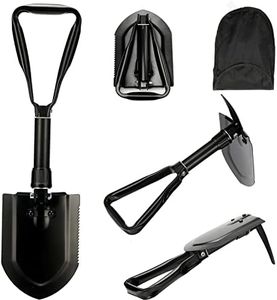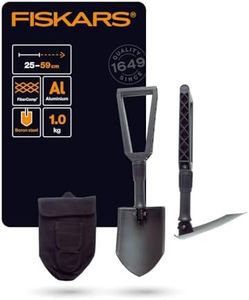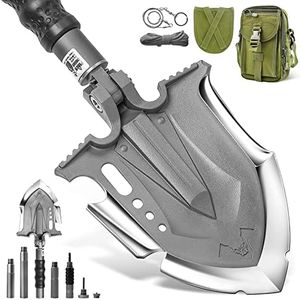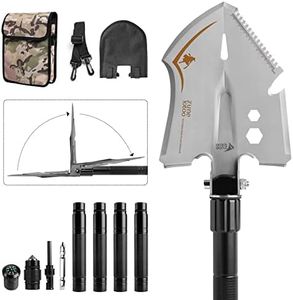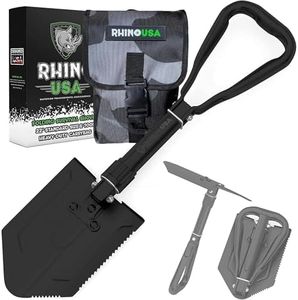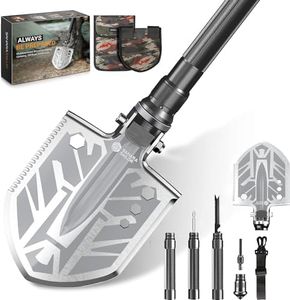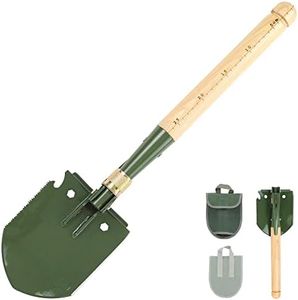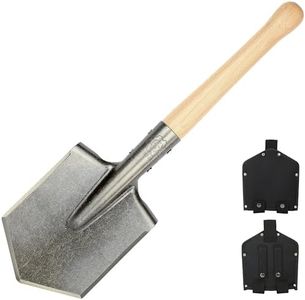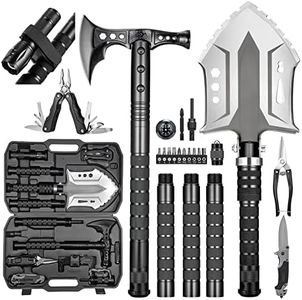We Use CookiesWe use cookies to enhance the security, performance,
functionality and for analytical and promotional activities. By continuing to browse this site you
are agreeing to our privacy policy
10 Best Survival Shovels
From leading brands and best sellers available on the web.Buying Guide for the Best Survival Shovels
Choosing a survival shovel is all about finding the right balance between portability, durability, and functionality for outdoor needs like camping, hiking, or emergency preparedness. When browsing options, think about the main situations you'll be using your shovel in—what tasks you expect it to handle, how much weight you're willing to carry, and how often you'll rely on features beyond digging. Paying attention to key specifications will help ensure you get a shovel that's practical for you and not just loaded with extras you may never use.MaterialMaterial describes what the shovel is made of, which is crucial for its strength, weight, and longevity. Most survival shovels are constructed from steel, aluminum, or sometimes titanium. Steel is strong and durable, often best for tough digging but can be heavier. Aluminum is lightweight, which is easier to carry but might not stand up to heavy use as well as steel. Titanium shovels are both strong and light, but tend to be more expensive. If you mostly need a compact tool for light digging or as part of an emergency kit, aluminum might work well. For regular, demanding use in rocky or frozen ground, steel or titanium are better choices.
Size and PortabilitySize and portability relate to how big the shovel is when in use and how small it gets for carrying. Some survival shovels are full-size, like regular garden shovels, while others are compact, folding down to fit in backpacks or vehicles. Larger shovels make digging easier but are bulkier to carry. Folding or telescoping shovels are more portable, ideal for hikers or anyone short on space. Consider what you'll be doing most—if you're traveling light, go for a compact, folding option; for heavier digging or use around a vehicle or base camp, a larger, sturdier shovel is better.
WeightWeight tells you how much the shovel contributes to your gear load. Lighter shovels are easier to carry on long treks, making them great for backpackers, whereas heavier shovels may indicate stronger materials and sturdier construction. Choose a lighter shovel for general emergency or hiking use, but if you expect to do a lot of heavy digging, some extra weight is a good trade-off for durability.
Multi-function FeaturesMany survival shovels come with added features such as saw edges, fire starters, bottle openers, or detachable handles that hide other tools. These extras can be handy but also add complexity, weight, or points where the shovel might fail. Consider which tools you'll really make use of, like a saw edge for cutting wood or a built-in pick for digging through hard soil. If you thrive on minimalism, a simple, sturdy shovel might be best, while gadget-lovers may enjoy all-in-one models.
Handle Design and LengthHandle design affects how comfortable and effective the shovel is in your hands. Straight, simple handles are easy and reliable, while ergonomic handles or those with padding can make tough digging easier. Some shovels have adjustable or extendable handles for reaching or extra leverage. Think about what feels comfortable to you and if you'll need to dig while standing, kneeling, or in cramped spaces. Pick a handle style and length that suits your main use, keeping in mind that longer handles offer more leverage but reduce portability.
Blade Shape and EdgeThe blade shape and edge decide how well the shovel handles specific tasks. Pointed blades are better for digging into hard or rocky soil, while flat blades work great for moving sand or snow. Some shovels have serrated or sharpened edges to help slice through roots or tough turf. Think about the environments you'll be in—pick a pointed, possibly serrated blade for wilderness or survival situations, while a flat-edged blade works well for light-duty camp chores.
